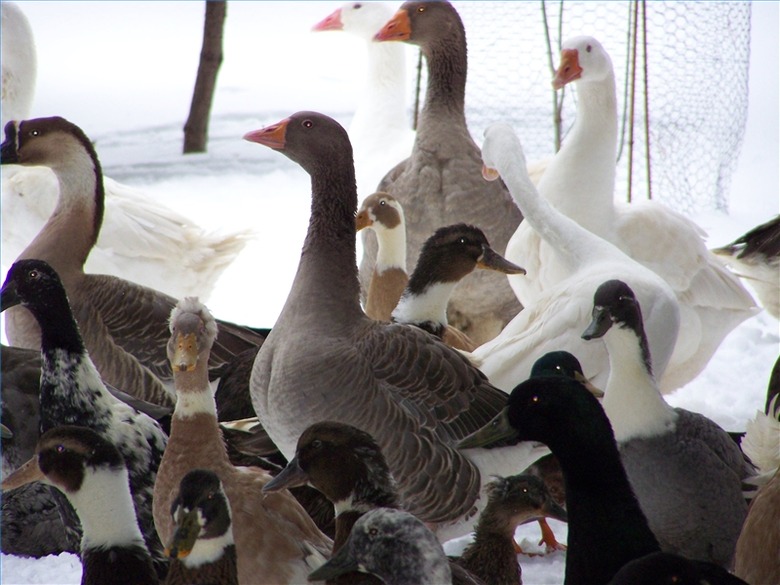How To Properly Handle And Train Geese
Warning
Geese are capable of biting through galvanized metal so be very careful when dealing with them up close and personal. Most of the time they will be very gentle even if they nip at you, but sometimes they forget and will bite too hard.
Tip
Just be patient when dealing with geese. They are stubborn but trainable. It will just require some work.
Geese are more than just very large waterfowl. They have a particular purpose on the farm as geese make excellent watchdogs for a flock of ducks. If you are raising waterfowl for eggs or for meat, it is always a good idea to have these "guard" birds handy. The proper conditioning and handling will have these large birds happy and healthy in their role as watch birds on the waterfowl farm.
Step 1
Some people think that raising geese is a bad idea because they can be mean, but the reality is that geese have very set rules of conduct and it is quite easy to convince them that you are the one in charge over them. Once they get that through their thick skulls and understand that they cannot bully you around, they will be much more malleable to your will. The way to gain that understanding is by being consistent in how you treat them. This is called training. If you never vary your approach, the geese will learn that much faster.
Step 2
Geese are natural born bullies. They will bark orders and expect you to follow them without hesitation. Don't give in to this. If the goose is hissing at you, hiss back. If it raises its wings in a threatening fashion at you, raise both your arms in a similar gesture. You are representing yourself as a bigger goose and the bully will back down. If you have a gander that is aggressive and he comes at you ready to fight, don't run, don't back down. Just grab him around the neck and if he slaps you with his wings, slap back. You are the bigger goose, and he will have to back down eventually. Once he figures out that you are the one in charge, it will go much more smoothly.
Step 3
Handling a goose is something that needs to be addressed, as they should never be grabbed or picked up by the legs. The legs are easily broken and should never be used to catch the bird, and definitely do not carry the bird upside-down by its legs, unless the bird is about to get killed for supper anyway. Also, if carrying a goose rather than a gander, do not carry her football style with your arm around her middle as this could break an egg inside her, cause an infection and eventually kill her. Carry her by the base of both wings instead.
Step 4
Geese can be herded by simply raising both hands out to your sides as if they were a set of huge wings and walking towards the geese to press them in the direction you want them to go. This posture is the goose equivalent of "I'm bigger and tougher than you are, so that makes me boss." They will understand and fear that posture and naturally will want to move away from you which is precisely what you want them to do. Many geese dislike being touched by people so if they are naughty, for example, they refuse to go where you tell them to go, all you have to do is catch the culprit and give him/her a big hug. That goose will obey you from that point on or risk getting hugged again.
Step 5
There is one aspect of geese that does not require training. They are natural "herders" and will herd the flock away from danger if you keep them with other smaller birds. This by itself makes them a benefit to the barnyard and their unique personalities will make them seem quite lovable. Just make sure you show them who's boss because they will certainly test your authority from time to time. It has been said that a flock of geese should not have too many ganders because they will fight, but the reality is, the more ganders you have, the less actual fighting they do. Perhaps they feel no need to fight when there are more of them for competition, but a small flock of ten or eleven geese can easily hold at least four adult ganders successfully.
